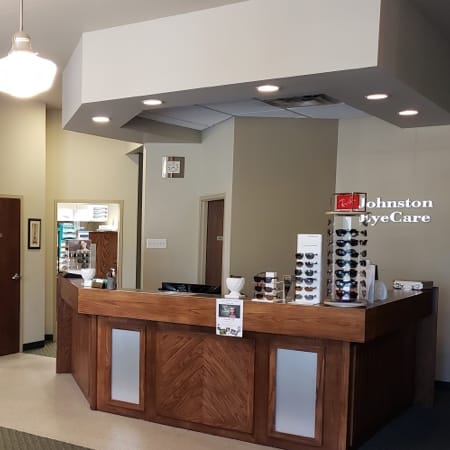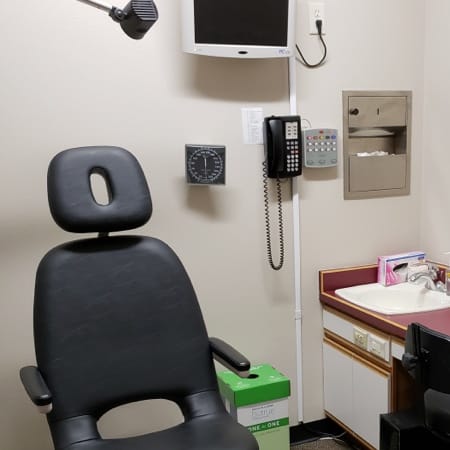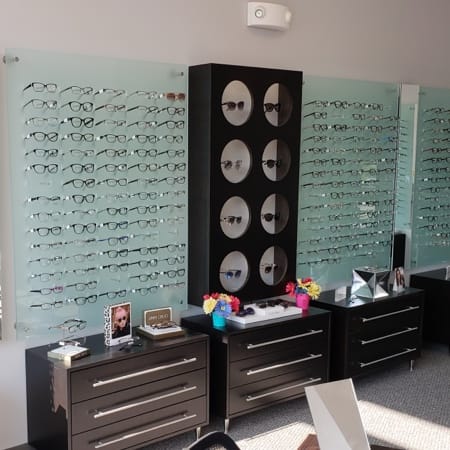
Eyecare for the Youngest Eyes
Some people may believe the vision screenings done in school are enough to protect and monitor their child’s eyes. But a vision screening can miss ⅓ of eye or vision problems in children!
Though vision screenings may be included as part of a robust health care plan for your child, a comprehensive children’s eye exam is of the utmost importance. Keep an eye on your child’s vision and contact us today.

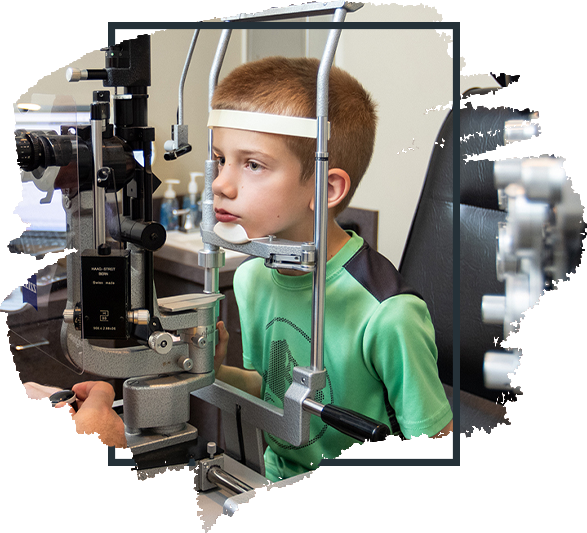

How Often Do Children Need Eye Exams?
As they grow up, children spend plenty of time using their eyes to interact with their world. Did you know 80% of learning in most classrooms is visually based?
Reading, writing, using a computer, and playing sports are all regular activities for most children. And all of these require strong visual skills.The American Optometric Association lays out clear guidelines for the frequency of children’s eye exams:
Birth Through 2 Years
Vision is an essential aspect of how your baby interacts with their surroundings! Your infant’s eyes are growing and achieving milestones rapidly.
Children should first have their eyes examined between 6 and 12 months of age to help ensure proper visual development and catch problems early.
3 Years Through 5 Years
Your toddler is growing leaps and bounds and becoming more familiar with the world around them!
Children should have their eyes examined at least once between 3 and 5 years of age. This helps set a good baseline for understanding their vision before they enter grade school.
6 Years Through 17 Years
During school, vision is a crucial part of learning. Make sure to bring your kids in for an eye exam before first grade and annually after that. Remember that children may not realize they have vision problems—they may think everyone sees the world the same way.
Regular eye exams throughout their school years can monitor any vision changes and catch problems before they have a chance to advance.

What Your Child’s Eye Exam Looks For
During a children’s eye exam, our doctors test for visual acuity— this is the classic test that comes to mind when you think of an eye exam. It uses a Snellen chart to test the eyes.
We measure multiple factors within the eye during an eye exam, as well. We look for eye diseases and monitor the health of structures like the cornea, retina, and optic nerve. Focusing on the anatomy of the eye helps us ensure the eyes are working as a team.
The eye exam also allows us to monitor for common childhood eye problems.
Lazy Eye (Amblyopia)
Amblyopia is commonly called lazy eye. It is often caused by weakness in the muscles surrounding the eye or a significant difference in each eye’s prescription. You may notice your child favoring one eye, but amblyopia can be detected with a comprehensive eye exam.
There are plenty of different treatment options, including corrective lenses, eye drops, and eye patches. Early treatment is key for maintaining healthy vision.
Crossed Eyes (Strabismus)
Strabismus is a condition where the eyes don’t align properly. With strabismus, the eyes often don’t look the same way at the same time. There are many different types of strabismus, and it’s labeled by the direction of the eye misalignment.
Strabismus treatments can involve corrective lenses, prism lenses, and, occasionally, corrective surgery.
Myopia
Myopia is more commonly called nearsightedness. When someone has myopia, their vision is clear when looking at close objects, but they struggle to focus on things in the distance.
Myopia is a common condition, affecting more than 40% of Americans. 1 in 4 families has a child whose vision is myopic to some degree. But treatment is available. Please check out our myopia control clinic to find out more.

Eye Exams Focus on It All—From Details to the Big Picture
At Metro EyeCare, our aim is to check on all aspects of your child’s vision, including visual skills, eye movements, refraction, and overall eye health. There are plenty of visual milestones your child should be meeting—though every child varies on when exactly they meet these milestones! We can also catch red flags that may crop up that indicate ocular health problems.
Allow our team to work with you in caring for your child’s eye health. Book your child an appointment with one of our skilled optometrists today!


Our Locations

Altoona
- 515-967-4095
- (515) 967-0262
- 1005 8th St SW, Suite A.
- Altoona, IA 50009
Hours
- Monday: 10:00 AM – 6:00 PM
- Tuesday: 9:00 AM – 5:00 PM
- Wednesday: 7:00 AM – 3:00 PM
- Thursday: 9:00 AM – 5:00 PM
- Friday: 9:00 AM – 3:00 PM
- Saturday: Closed
- Sunday: Closed

Johnston
- 515-270-0494
- (515) 270-6463
- 5501 NW 86th St., Suite 500
- Johnston, IA 50131
Hours
- Monday: 10:00 AM – 6:00 PM
- Tuesday: 9:00 AM – 6:00 PM
- Wednesday: 9:00 AM – 3:00 PM
- Thursday: 9:00 AM – 6:00 PM
- Friday: 9:00 AM – 3:00 PM
- Saturday: Closed
- Sunday: Closed

Services

Our Brands






See Our Google Reviews

Our Blog
What Is BlephEx, and How Can It Help Treat Dry Eye?
Dry EyeIf you have blepharitis or dry eyes, your optometrist may suggest a treatment called BlephEx to help. If you are suffering from blepharitis or dry eye syndrome, it is an eye condition that can cause red, swollen, irritated, itchy eyelids, BlephEx treatment may be a suitable option for you. While it can be uncomfortable, blepharitis […]
What Are the Best Contacts for Dry Eye?
Dry EyeThe uncomfortable symptoms experienced with dry eyes can lead to redness and irritation in the eyes. Dry eye disease is a condition that can make even the simplest daily tasks difficult. Fortunately, there are contact lenses available that can help alleviate some of these symptoms. Depending on the cause of your dry eye, your eye […]
Why Does Driving at Night Get More Difficult as You Age?
Eye HealthDriving at night can be difficult at any age, especially if you have a preexisting vision problem. Between glare, difficulty seeing in the dark, or a delayed reaction time, it can be difficult to do so safely. But why does it become more difficult as you age? As you get older, your eyesight naturally gets […]
What Is BlephEx, and How Can It Help Treat Dry Eye?

If you have blepharitis or dry eyes, your optometrist may suggest a treatment called BlephEx to help. If you are suffering from blepharitis or dry eye syndrome, it is an eye condition that can cause red, swollen, irritated, itchy eyelids, BlephEx treatment may be a suitable option for you. While it can be uncomfortable, blepharitis […]
What Are the Best Contacts for Dry Eye?
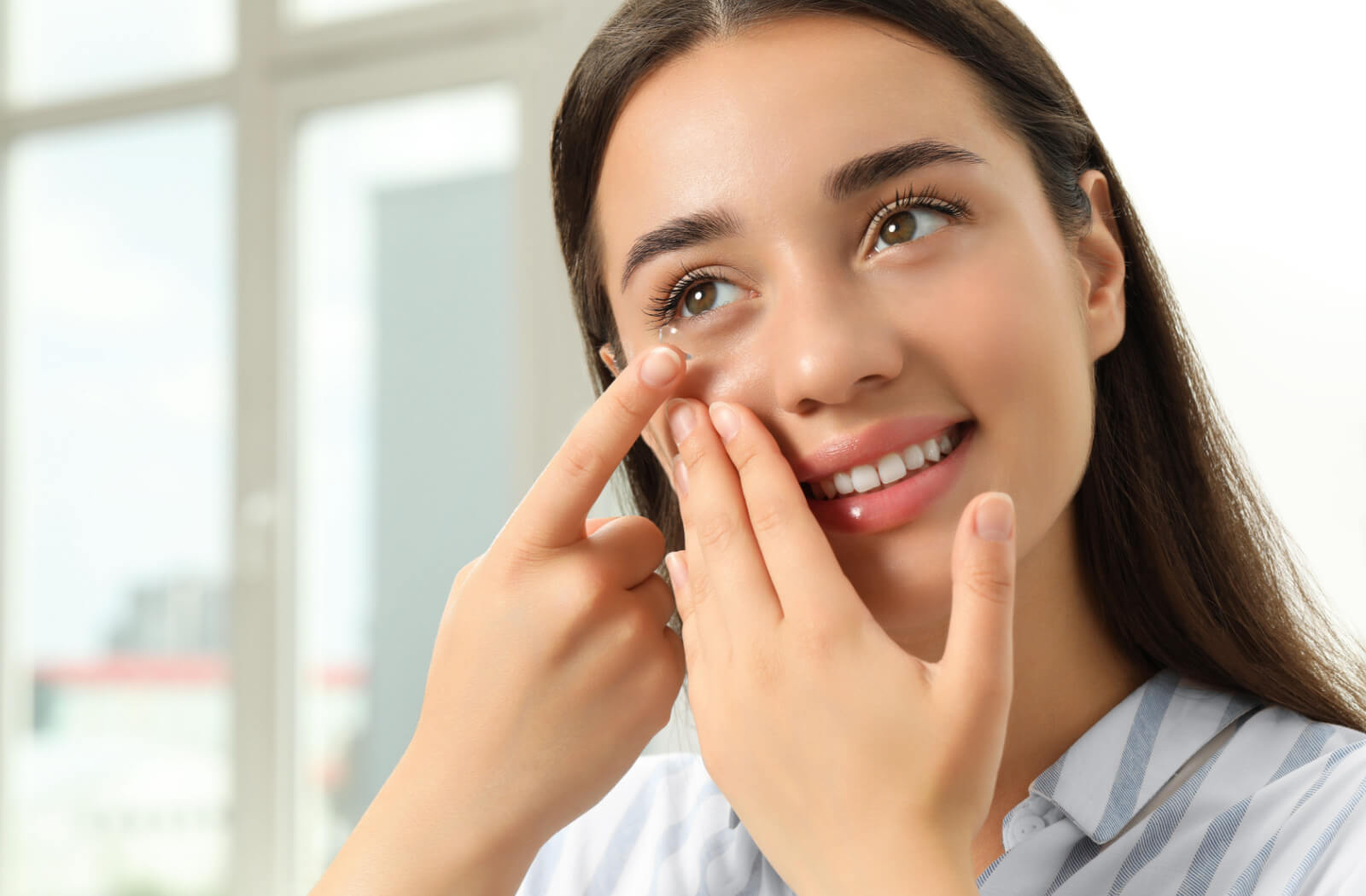
The uncomfortable symptoms experienced with dry eyes can lead to redness and irritation in the eyes. Dry eye disease is a condition that can make even the simplest daily tasks difficult. Fortunately, there are contact lenses available that can help alleviate some of these symptoms. Depending on the cause of your dry eye, your eye […]
Why Does Driving at Night Get More Difficult as You Age?

Driving at night can be difficult at any age, especially if you have a preexisting vision problem. Between glare, difficulty seeing in the dark, or a delayed reaction time, it can be difficult to do so safely. But why does it become more difficult as you age? As you get older, your eyesight naturally gets […]


